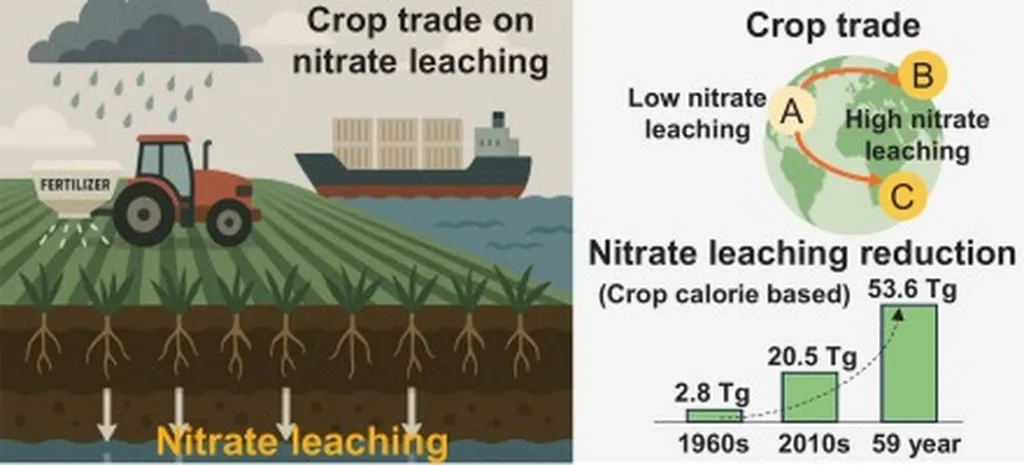In the heart of America’s agricultural belt, a silent threat lurks beneath the soil—a surge in nitrate leaching that could jeopardize water quality and, by extension, the energy sector’s reliance on clean water for various processes. A groundbreaking study, led by Yakai Wang from the University of Connecticut’s Department of Natural Resources and the Environment, offers a glimmer of hope, demonstrating that climate-smart agricultural practices could strike a delicate balance between maintaining corn yields and reducing nitrate leaching.
The study, published in *Earth’s Future* (which translates to *Future of the Earth*), integrates numerical modeling and machine learning to optimize nitrogen fertilization strategies. This approach aims to sustain corn yields while mitigating nitrate leaching in the US Midwest, a region critical for both agriculture and energy production.
“Our findings underscore the synergistic benefits of integrated management,” Wang explained. “By combining a lower nitrogen rate with cover crops and no-tillage, we can significantly reduce yield-scaled nitrate leaching, even under future climate scenarios.”
The research reveals that the economic optimum nitrogen rate, while sustaining yields, increases nitrate leaching, particularly under future climate projections. However, optimized strategies—such as reducing the nitrogen rate by 30% and adopting climate-smart practices—could slash yield-scaled nitrate leaching by over 60% from 2020 to 2100.
For the energy sector, this research is a game-changer. Clean water is essential for cooling thermal power plants, hydraulic fracturing, and other energy-related processes. By reducing nitrate contamination, the energy industry can secure a more reliable water supply, ensuring operational efficiency and sustainability.
Moreover, the study’s adaptive strategies offer a roadmap for achieving sustainable, high yields while minimizing environmental impacts. This is particularly relevant as climate change intensifies, with unpredictable weather patterns and increased precipitation threatening to exacerbate nitrate leaching.
The integration of machine learning and numerical modeling in this study sets a new precedent for agricultural research. By leveraging advanced technologies, scientists can predict and mitigate environmental challenges more effectively, paving the way for a more resilient and sustainable future.
As the energy sector continues to grapple with water scarcity and quality issues, this research provides a compelling case for investing in climate-smart agricultural practices. By doing so, the energy industry can not only secure its water supply but also contribute to the broader goal of environmental sustainability.
In the words of Wang, “This study offers adaptive strategies for achieving sustainable, high yields while minimizing nitrate leaching under various climate scenarios.” As we look to the future, these strategies could well shape the trajectory of both agriculture and the energy sector, ensuring a more sustainable and secure future for all.

